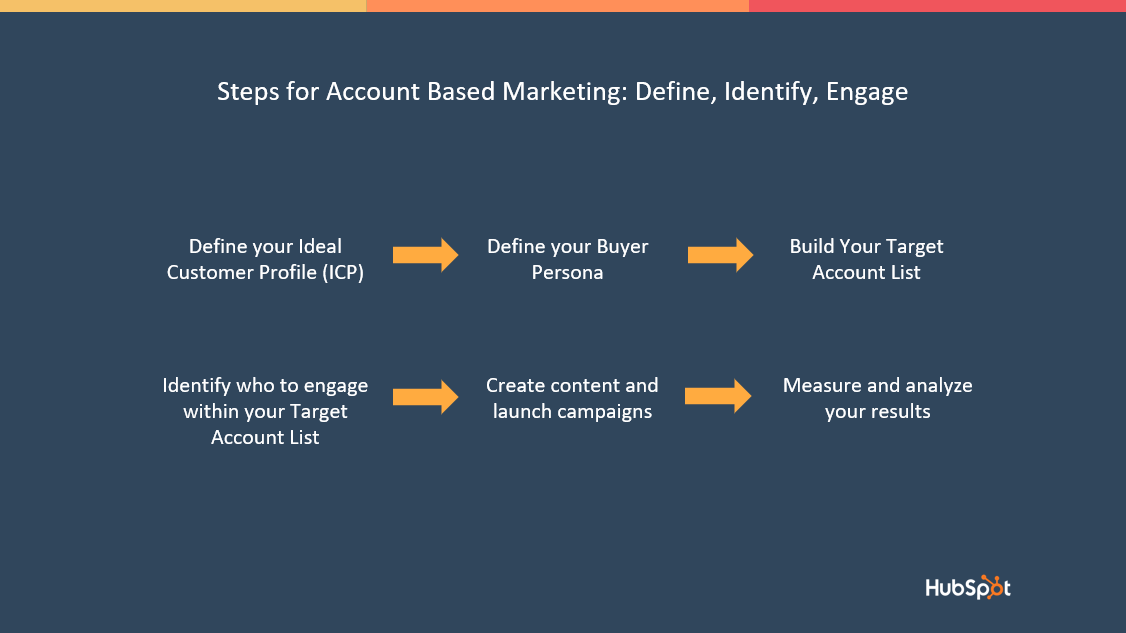
Growing an MSP is tough, and the "best" playbook depends on who you ask.
But you're here for answers, so I'll make a case for our playbook: Account-Based Marketing (ABM).
What kind of results can you expect from this "ABM" strategy?
We generate 5 to 10 appointments per month, but I'm not going to lie; it took us over a year to nail that consistency.
Also, have to admit that we implement ABM as a team -- marketing and sales--, and it helps to have the right technologies, too.
However, this article isn't about implementation; it's about understanding what ABM is and showing you that it's the best growth strategy for MSPs in 2020.
.png?width=200&name=Peter%20Casserly%20(4).png)
|
Part 1:

The short definition of ABM: it's when marketing people and salespeople truly work together.
The longer, more exact definition: it's an intense collaboration between people who bring different but equally significant skills to drive client acquisition.
It's a contract between marketing and sales that covers:
Simple, right? It is easy to grasp conceptually, but when it comes to implementation, well, that's a whole other story...
Here are the steps HubSpot outlines for the marketing half of ABM implementation

Some of you may be thinking this is just good ole fashioned "targeted outbound," but it's important to consider how ABM diverges.
First of all, the "A" in ABM isn't silent.
Both marketing and sales departments know the exact accounts and decision-makers by name and job title, the industry's business drivers, and the person's typical questions and challenges around technology.
Whereas with "targeted outbound," accounts are always identified beforehand, which means some marketing tactics, like pay-per-click campaigns, won't reach decision-makers the sales team is hunting. The lack of sales and marketing coordination is why most "targeted outbound" doesn't convert well.
It's time for an ABM example to show why sales and marketing integration is key.
Part 2:
.gif?width=1920&name=animation%20(1).gif)
ABM is not a "new" B2B strategy. Companies, especially enterprise firms, have done this for a long time. But it is fair to say that ABM has grown in popularity recently. Prominent Martech vendors, like Salesforce and HubSpot, talk about ABM more and plenty of "gurus" as well, and I think there a few big reasons it's perfect for MSPs.
#1 reason is that how SMBs decide on vendors and partners is longer and more complex than how it used to be. And ABM mirrors every step they take along the way, no matter what phase they are in or how many people are involved.
#2 reason ABM has sprung up is because vendor technology, like HubSpot, has improved dramatically, so much that it not only enables better implementation but also, better measurement and attribution after the fact.
Here are statistics and a video to back up my first point
Today, there are an average of 7 decision-makers involved in the B2B buying process. And, 50-90% of the journey is complete before a buyer interacts with a sales rep. Spotio.
Once your buyers begin to realize that they have a particular pain point, the research begins. For 72% of buyers, they’ll turn to Google. The first stage of research begins with general search terms as buyers explore the options at their disposal. Buyers are usually looking for educational material, customer reviews, and testimonials at this stage. Pardot.
And here's Gary's take on LinkedIn's role in all this
Part 3:

Coming soon! Stay tuned
Once a week or so we send an email with our best content. We never bug you; we just send you our latest piece of content.
